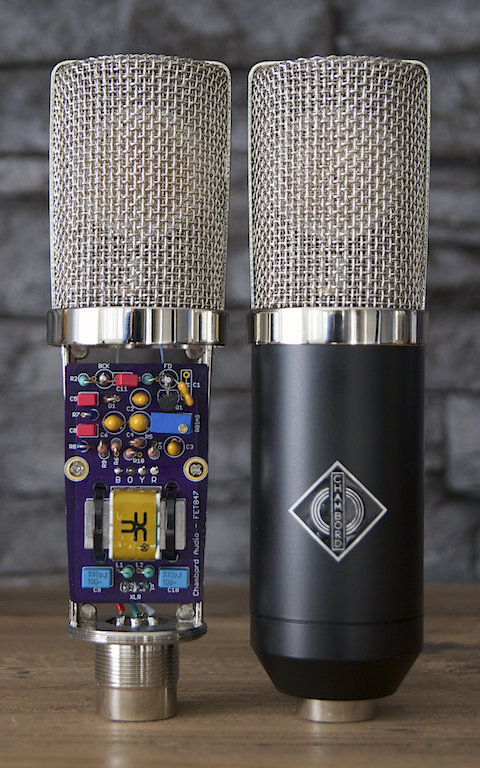JMPGuitars
Well-known member
- Joined
- Apr 30, 2018
- Messages
- 152
This seems ingenious.
I'm now awake to the idea that fussing over tubes in a mic circuit is probably more trouble than it's worth considering 1.) the trouble of selecting a good tube, 2.) the added expense of the power supply, and 3.) the fact that most people can't necessarily "hear" any tube benefits since these tube mic stages are designed to be generally linear and low-noise / clean.
My goal is to put the best capsule I can afford into a solid-state mic and call it good for vocal duties. This FET847 seems like an ideal choice for a cardioid-only vocal mic with a quality capsule, and not fretting about the elusive tube mojo.
I'm aware we're not getting the full S/N ratio available by not polarizing the capsule at a full 60v. That has me wondering if anyone's tried jacking 60v in at some point beyond the output transformer. (Probably a stupid thing to ponder.)
Would there be any noticeable difference between this FET 847 and the D-47fET? Or are they essentially the same?
Thanks for any thoughts.
Personally, I don't think tubes are mojo. There's definitely a noticeable difference, but no, not everybody can tell the difference.
This board is different than the FET47. I've built both the FET47, and the EF47, the M49, a couple U87i mics (and some others), and the EF47 is by far my favorite build so far. Though it's odd, from the demos I heard, I initially thought I liked the FET47 version better. My guess is it has to do with the capsules used, or recording conditions, etc... It's hard to compare apples to apples from different recordings. I think transformer/capsule quality is absolutely more important than the presence of a tube.
The FET847 is surprisingly good for what it is. I think it would be even better if I used a nicer capsule, but for me, the point of this project was to keep it budget oriented, while shooting for good results- and it delivered. My next build will probably be a 2nd FET47, but this time I'm curious about trying Danny's M7 capsule.
Thanks,
Josh





































